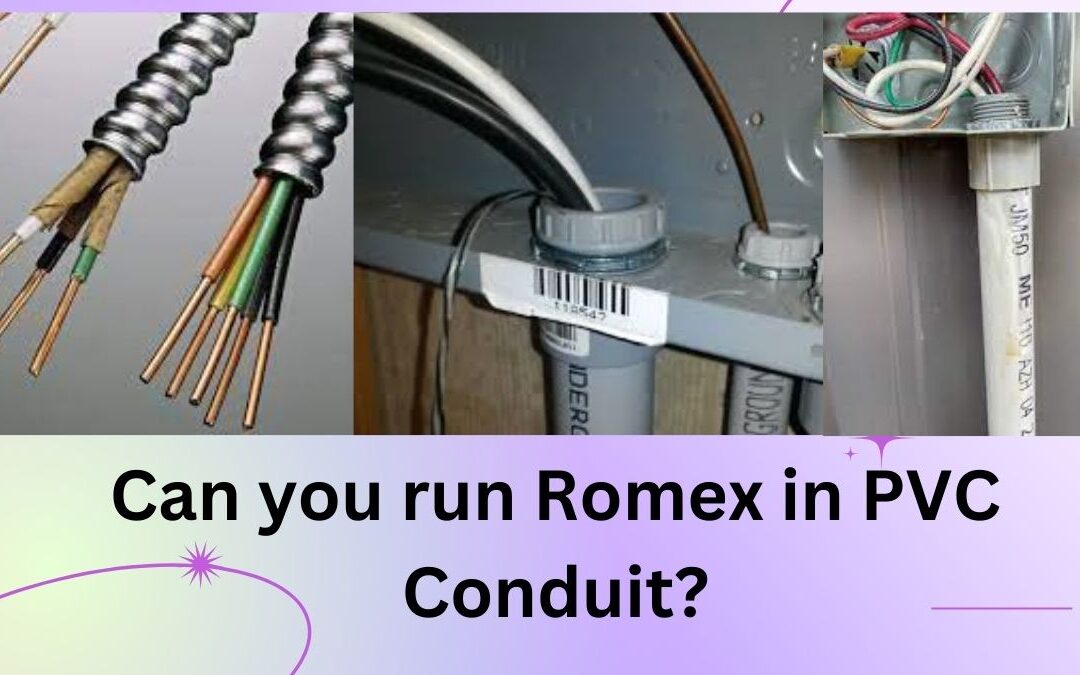Can you run Romex in PVC conduit? This question often arises when considering electrical installations, as both Romex and PVC conduit are commonly used components. Understanding the compatibility and feasibility of combining these materials is crucial for ensuring safe and efficient wiring. In this article, we will explore the topic of running Romex in PVC conduit, addressing the considerations, code requirements, and practicality associated with this installation method. By gaining insights into the regulations and best practices, you can make informed decisions and achieve reliable electrical systems.
Romex, also known as non-metallic sheathed cable, and PVC conduit have distinct advantages and purposes in electrical applications. However, it is essential to evaluate their compatibility, adherence to electrical codes, and potential challenges when used together. By examining the benefits, limitations, and installation techniques, we can determine whether running Romex in PVC conduit is a suitable option for your electrical projects. So, let’s delve into the details and shed light on the question: Can you run Romex in PVC conduit?
Understanding Romex and PVC Conduit
Can you run Romex in PVC conduit? To answer this question, it is crucial to have a clear understanding of both Romex and PVC conduit and their respective roles in electrical installations. Romex, also known as non-metallic sheathed cable, is a popular type of electrical wiring used in residential and commercial settings. It consists of insulated conductors wrapped in a flexible outer jacket, providing protection and ease of installation.
PVC conduit, on the other hand, is a durable and versatile conduit system designed to house and protect electrical cables. It is made of polyvinyl chloride (PVC), a rigid and non-conductive material that offers excellent corrosion resistance and insulation properties. PVC conduit comes in various sizes and can be used for both underground and above-ground applications.
When considering whether you can run Romex in PVC conduit, it is essential to consult local electrical codes and regulations. In some jurisdictions, running Romex in PVC conduit may be permitted under specific conditions, while in others, it may not be allowed. Compliance with electrical codes is crucial to ensure the safety and efficiency of the electrical system.
Additionally, it is important to consider the size and capacity of the PVC conduit when using Romex. PVC conduit should be sized appropriately to accommodate the Romex cable without causing excessive bending or damage to the cable. Overfilling the conduit can lead to overheating and potential hazards.

Code Regulations and Guidelines
Can you run Romex in PVC conduit? The answer to this question depends on the specific code regulations and guidelines set forth by electrical authorities and local jurisdictions. Understanding the code requirements is essential to ensure compliance and maintain the safety and integrity of the electrical installation.
Electrical codes provide specific guidelines on the types of wiring methods that are permitted for use in PVC conduit. While some codes allow running Romex in PVC conduit, others may prohibit it. It is crucial to consult the National Electrical Code (NEC) or the local building department to determine the specific regulations applicable in your area.
When considering the use of Romex in PVC conduit, several factors are typically taken into account. These include the size of the conduit, the size and number of conductors in the Romex cable, and the temperature rating of the cable. Adhering to these guidelines ensures that the conduit is not overfilled, preventing overheating and potential fire hazards.
In some cases, code regulations may require the use of specific types of cables or wiring methods in PVC conduit, such as individual conductors or THHN/THWN wires. These alternatives offer different characteristics and may be better suited for conduit installations.
Ultimately, it is important to consult the applicable electrical codes and regulations and seek guidance from a qualified electrician or local authorities when determining whether you can run Romex in PVC conduit. By following the prescribed guidelines, you can ensure a safe and compliant electrical installation. So, can you run Romex in PVC conduit? Let’s delve deeper into the code regulations and guidelines.
Benefits and Considerations
Can you run Romex in PVC conduit? This question often arises when planning electrical installations. Understanding the benefits and considerations of using Romex in PVC conduit can help you make an informed decision for your specific project.
One of the significant advantages of running Romex in PVC conduit is the added protection it provides. PVC conduit acts as a physical barrier, shielding the electrical cables from potential damage caused by impact, moisture, or chemicals. This extra layer of protection can enhance the longevity and reliability of the electrical system.
Furthermore, PVC conduit offers excellent resistance to corrosion, making it a suitable choice for installations in damp or corrosive environments. It can withstand exposure to moisture, salt, and various chemicals, ensuring the integrity of the electrical wiring over time. This durability can be especially beneficial in outdoor or underground applications.
Another consideration is the flexibility and ease of installation provided by PVC conduit. Compared to rigid metal conduit, PVC conduit is lightweight and can be easily cut, bent, and assembled. This flexibility simplifies the installation process, especially in complex or curved pathways.
When considering the use of Romex in PVC conduit, it is important to consider the applicable code regulations and guidelines. Different jurisdictions may have specific requirements regarding the use of Romex in conduit systems. It is crucial to consult the National Electrical Code (NEC) or local electrical authorities to ensure compliance with the regulations in your area.
Additionally, the size and fill capacity of the PVC conduit should be considered. Adequate space must be provided within the conduit to accommodate the Romex cable without exceeding the maximum fill capacity. This ensures proper airflow and prevents overheating of the cables.
Practical Installation Tips
When it comes to installing Romex in PVC conduit, following proper techniques and guidelines is crucial to ensure a safe and efficient electrical system. Here are some practical installation tips to consider:
- Choose the right size: Select the appropriate size of PVC conduit to accommodate the Romex cable. The conduit should provide enough space for easy installation and future modifications if necessary.
- Pulling the cable: Lubricate the inside of the conduit before pulling the Romex cable through. This reduces friction and makes the process smoother. Use proper pulling techniques and equipment to avoid damaging the cable or conduit.
- Secure the conduit: Install conduit straps or hangers at appropriate intervals to secure the PVC conduit in place. This prevents sagging and maintains proper alignment.
- Maintain bend radius: Avoid sharp bends in the conduit that can damage the Romex cable. Follow the recommended bend radius guidelines to ensure the integrity of the cable and prevent any potential signal interference.
- Grounding: Properly ground the PVC conduit according to code regulations. This ensures safety and protects against electrical faults.
- Seal the conduit ends: Use appropriate sealing methods to prevent moisture or debris from entering the conduit. This helps maintain the integrity of the Romex cable and extends its lifespan.
- Labelling: Clearly label the PVC conduit to identify the type of cable and its purpose. This simplifies troubleshooting and future maintenance.
Remember to consult the National Electrical Code (NEC) and local regulations for specific requirements regarding Romex installation in PVC conduit. Adhering to these guidelines ensures compliance and safety in your electrical system.
Releted Post :Can you use Plumbing PVC for Electrical Conduit? |Can I use White PVC for Electrical Conduit? |Will salt damage PVC pipe? | How to Remove Dried PVC Glue from Pipes?|How to Connect Copper Pipe to PVC?|How to Thread PVC Pipe for Your Projects|How Long Does PVC Pipe Last? | Innovative PVC Pipe Dishwasher Designs for Modern Kitchens
Conclusion
In conclusion, we will summarise the main points discussed in the blog, emphasising the importance of understanding the compatibility, code requirements, and practical considerations when running Romex in PVC conduit. By following the guidelines and regulations, you can confidently and safely complete electrical installations using this combination.

